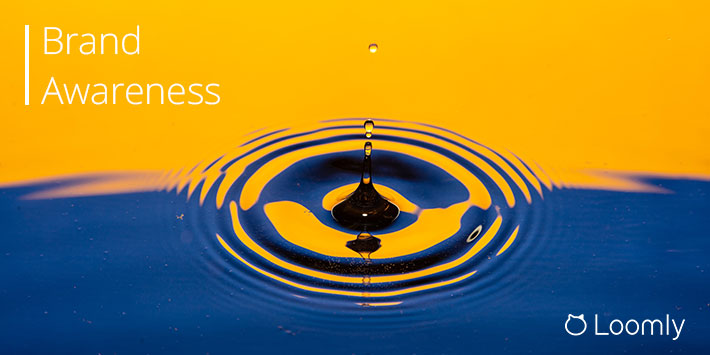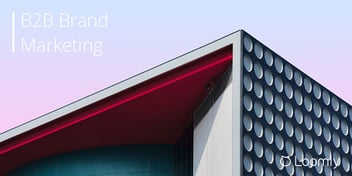Brand Awareness: 20 Strategies To Make Your Brand Memorable
Increasing brand awareness is a top priority for marketers:
Nine out of 10 B2B marketers claim building brand awareness is their top goal.
But how exactly do you ensure your audience remembers your brand?
In this guide, we’ll examine what brand awareness is and why it matters in 2020. Then, we’ll share 20 strategies you can use to make your brand memorable.
Let’s begin.
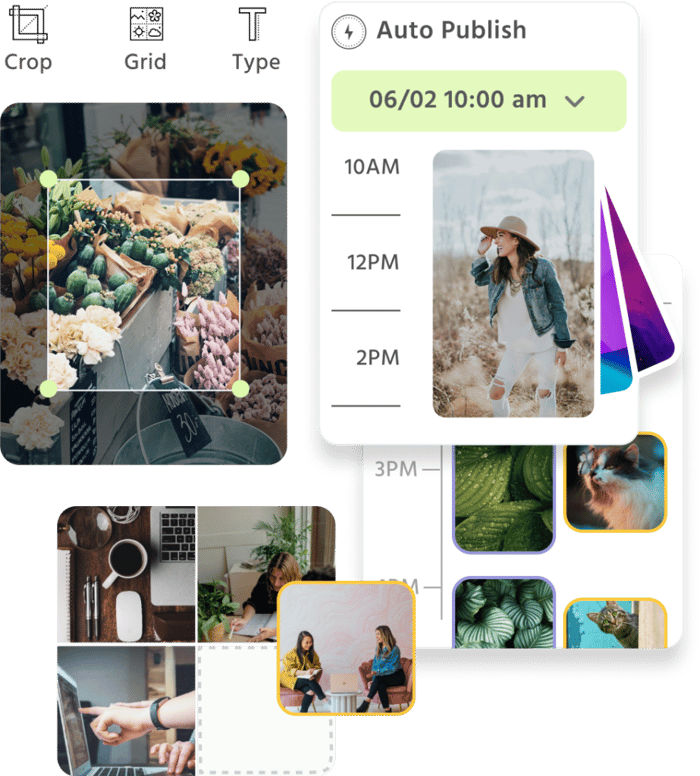
Manage all your social media accounts in one place.
Craft, schedule, & auto-post content to all your social channels, then track analytics and manage interactions from a single, easy-to-use dashboard.
What is Brand Awareness?
Brand awareness refers to the ability of a target audience to recognize or recall a brand or product accurately.
There are a few ways to measure brand awareness:
- The ability to recognize a brand – e.g. car manufacturer, BMW.
- The ability to recognize a product – e.g. car model, X3.
- The ability to match a brand to its products (or vice versa) – e.g. BMW X3.
- The ability to recognize brand elements – e.g. logos.
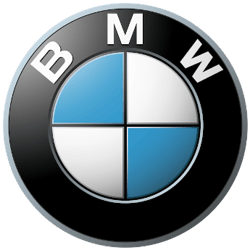
You can use these separately or together to gauge the level of brand awareness.
So, the more people in a target audience that can recognize a brand, products, and specific elements, the higher the level of brand awareness.
For example, if we were to say Apple or Nike, you’d instantly recognize the brand, imagine their logos, name one product, and even share a little information about what the brand stands for.
Establishing brand awareness is particularly important in new companies. But it’s also essential to keep building brand awareness to strengthen your market position.
When brands become so well-known, they replace the generic term for similar products. For example:
- Coke replaces cola – “I’ll have a Coke, please.”
- Google replaces search online – “I’ll just Google that.”
These terms are known as proprietary eponyms.
Examples of Successful Campaigns
Anheuser-Busch
During the COVID-19 pandemic, Anheuser-Busch made a dramatic pivot from brewing beer to manufacturing hand sanitizer.
We have a long history of supporting our communities and employees – this time is no different. That’s why we are using our supply and logistics network to begin producing and distributing bottles of hand sanitizer to accommodate the growing needs across the United States. pic.twitter.com/nqImcE5WJP
— Anheuser-Busch (@AnheuserBusch) March 22, 2020
Using their existing supply chain, they were able to produce and distribute hand sanitizer. Building goodwill within the community generated tremendous brand awareness, as major press publications like Fox, LA Daily News, and the New York Post promoted the story.
Burger King
Burger King used technology to increase their brand awareness. Their #WhopperDetour campaign encouraged users to download the Burger King app and travel to within 600 feet of a McDonald’s restaurant. Using geofencing, users then received a deal on their app for a 1-cent Whopper sandwich.
how do you order a Whopper sandwich for a penny “at” McDonald’s? here’s how. #WhopperDetour https://t.co/lAgbGO0bL0 pic.twitter.com/ANXIy6Yu9I
— Burger King (@BurgerKing) December 4, 2018
The campaign resulted in over 1.5 million new downloads of the app and won a mobile marketer award.
Zara
Zara used an army of micro-influencers to launch its online store in South Africa. The brand launched the #DearSouthAfrica campaign a few days before the official opening to create awareness around the news.
As soon as the micro-influencers started sharing the news and promoting the hashtag on Twitter, the campaign reached 7.88 million worldwide by the time of the store launch.
Why Brand Awareness Matters in 2020 (And Why Your Brand Should Invest in it Now)
Here are six reasons why your brand should be investing in brand awareness:
A. Brand awareness is at the top of the marketing funnel
It’s vital to run brand awareness campaigns with content that’s going to attract visitors. They’ll inform people about what you have to offer, and start nurturing those people who are most likely to purchase from you later on.
B. Brand awareness keeps your brand top-of-mind
When people get to know your brand, they become familiar and comfortable with it. When it comes to choosing between you and a competitor, they’ll want you.
C. Brand awareness establishes trust
People research and rely on opinions before they make a purchase. When your audience knows, likes, and trusts your brand, then they’re likely going to remain loyal and make repeat purchases.
D. Brand awareness creates an association
Brand awareness subconsciously associates actions and products with particular brands, like the Coke and Google examples above.
E. Brand awareness builds brand value
By building brand awareness and promoting positive experiences, the financial and perceived worth of your brand value increases. For example:
- Financial value: Apple has a brand value of around $234 billion.
- Perceived value: Many consumers feel Apple has a higher brand value than Samsung. (The reverse is also true.)
F. Brand awareness strengthens your brand moat
As brand awareness increases and becomes more dominant, it builds your brand moat and prevents competitors from gaining additional market share.
In other words:
Investing in brand awareness can help you to achieve a range of business objectives and goals, as it expands your audience, increases leads, and generates revenue.
How to Grow Brand Awareness
In this section, we’ll look at 20 strategies you can implement to establish, build, and increase brand awareness.
How to Establish Brand Awareness
First, we’ll look at five ways to establish brand awareness.
1. Improve SEO with search-intent keywords
There are many ways to use SEO to establish brand awareness. Getting your brand name and content on the first page of search results is your target makes your brand more credible.
You can start by focusing on the different types of search intent keywords that users type into search engines. Depending on how near they are to purchasing can influence the kind of query they enter.
For example:
- Navigational intent – when users want to go straight to a website or page, they’ll often enter a single word – e.g. “Nike.”
- Informational intent – when users want to know the answer to something, they’ll often enter a longer question-based phrase – e.g. “What is an Air Jordan 1 Mid Mens Shoe?”
- Transactional intent – when users want to buy, compare or subscribe products and services – e.g. “Best football boots 2020” or “Nike T90 Laser I SE vs adidas Predator Mania 19+”
Knowing how users search for your brand and products can help you tailor your content to each stage of the buyer journey.
2. Maximize social media
Social media allows brands to reach their audience in a variety of ways.
a) Focus your efforts
With so many social media platforms to choose from, it can be tempting to think you need to be present on all of them. Established larger brands may have the resources to accomplish that, but often smaller startups don’t.
So, decide which platforms you want to target based primarily on where your target audience hangs out. For instance, B2B brands might want to focus their efforts on LinkedIn, whereas craft and creative brands might opt for Instagram and Pinterest.
b) Mix your content
It’s crucial to get the right balance of content in your social media posts. If you only post when you want to push or sell something, you won’t help your brand. People want to get a mix of informative, helpful, and entertaining content so they get to know, like, and trust your brand.
Research by Weber Shandwick and Forbes Insights shows that over 50% of brand reputation comes from being sociable online so that customers can get to know more about you as a brand.
c) Create your unique hashtag
Hashtags are used across various social media networks, including Twitter, Instagram, LinkedIn, and Pinterest. Not only can you use existing popular hashtags to draw attention to your content, but you can also create a unique hashtag, either for a specific campaign or for general brand use.
For example, Zara used the campaign hashtag #DearSouthAfrica to launch its online store in South Africa, and Nike uses #JustDoIt as their generic brand hashtag.
3. Tell your story
Every brand has a story. It might be your founder’s story, your product development, or your battle against all the odds. As long as it’s genuine and authentic, then people will latch onto your story and instantly associate your brand with that background.
4. Use branded packaging
When you receive an order in branded packaging, it makes you feel that extra bit special. It’s like a gift, even if you’ve paid for it!
The whole product experience starts with unboxing, so as a brand, you have a chance to make a strong first impression with branded packaging, like Harry’s:
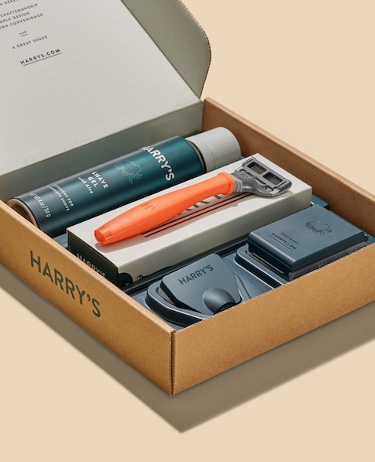
5. Give your brand a personality
One surefire way to establish awareness of your brand is to give it a personality. And nothing works better than fun and comedy, as long as it’s in keeping with your brand.
For example, Dollar Shave Club used humor to establish its brand in 2012:
How to Build Brand Awareness
Having established your brand, it’s time to step-up your efforts and build more awareness.
6. Form partnerships with other brands
If you’re looking to build brand awareness, the chances are that other brands are too, which makes for an ideal opportunity to team up with another brand and work on a joint campaign.
That’s what BuzzSumo and Noah Kagan did on the OkDork blog when they analyzed 100 million articles to see how content goes viral. They also included some shareable graphics along the way that give attribution to OkDork:
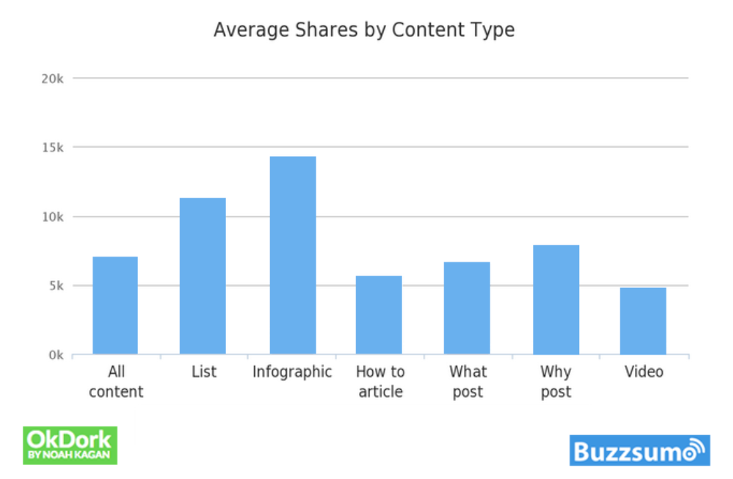
Credit: OkDork
You can also form partnerships at a local level. For instance, two local businesses could sponsor a local event.
The advantage of partnerships is that both brands reach more people and introduce one brand’s audience to another.
7. Run referral programs
Referral programs are an excellent way to tap into word-of-mouth marketing, and it’s a well-known fact that customers are 4x more likely to buy when referred by a friend.
For example, The Athletic’s 30-day Guest Pass allows current subscribers to share five guest passes with fellow fans:
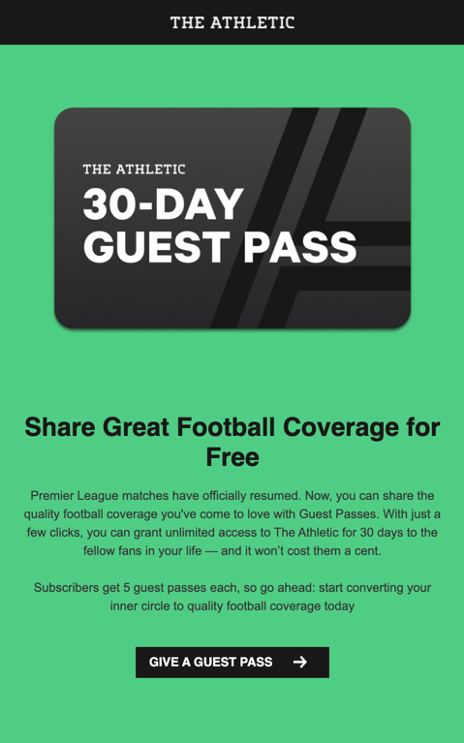
8. Offer freemium
Offering a freemium product lets customers use your brand, no strings attached, for an indefinite period. (As opposed to a free trial, which runs for a specified period.)
The freemium pricing model is especially popular with SaaS products, such as Mailchimp, Wistia, and Dropbox, where users get a limited set of features for free with the option to upgrade to premium for more features.
The typical condition with a freemium subscription is that the vendor’s brand logo is advertised in some format. So, with Mailchimp for example, freemium email newsletters contain their brand logo in the footer:
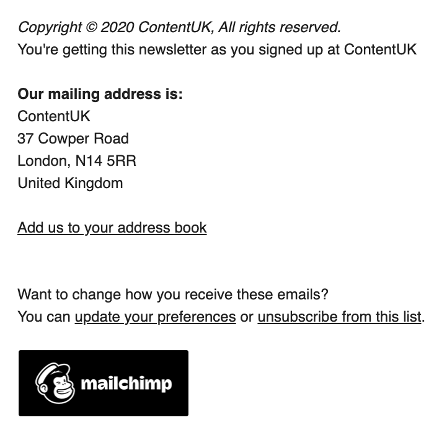
Providing a freemium product means you can get your brand in front of more people, build your brand, and attract more free and paying customers.
9. Give something away for free
Everyone loves a freebie. Putting your brand name and logo on merchandise and giving it away for free is another way to circulate your brand.
You can either use swag items, like mugs, stationery, and t-shirts. Or you can offer your product or service as a free trial: for instance, you can start your 15-day free trial of Loomly now from here.
Women’s athletic wear, Girlfriend Collective, launched their brand by giving away $80 leggings for free and received 10,000 orders.
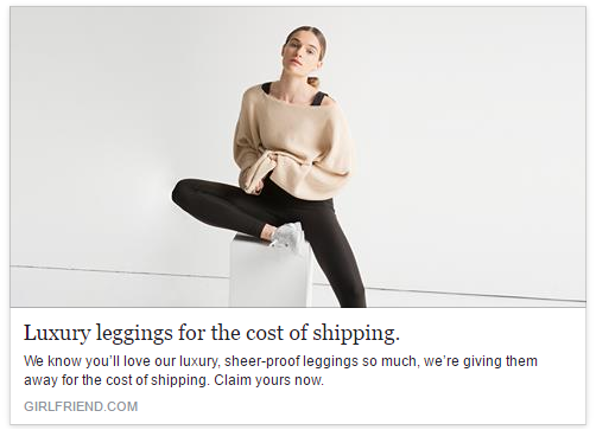
10. Run contests, giveaways, and sweepstakes
Next on the list is running a contest, giveaway, or sweepstake on social media. These popular events are a great way to build brand awareness.
Entrants have to take actions such as liking a page, commenting, sharing the contest on other platforms to earn more entries, and increase their chances of winning.
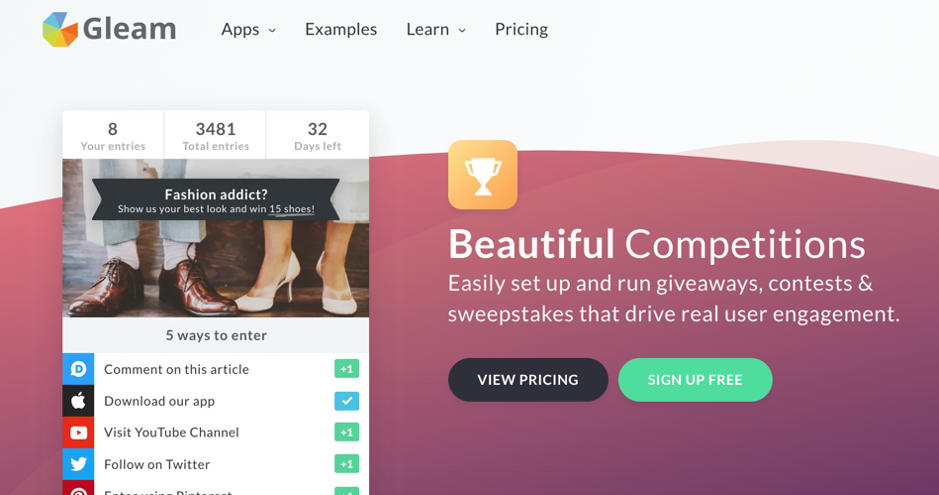
These promotions can rapidly build brand awareness by allowing you to reach a new broader audience, as entrants spread the word.
11. Create free content
Creating content is one of the easiest ways to build brand awareness. You can create content in many forms, including blog posts, downloadable guides, videos, and infographics.
It’s also worth noting that you don’t have to publish content on your website. For example, you can post guest content on other sites that your target audience visits:
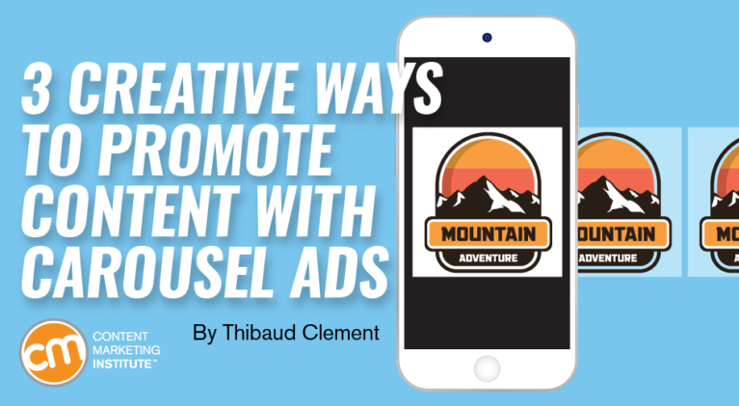
Plus, you can republish content on platforms such as LinkedIn Publishing and Medium.
Wherever you publish your content, make sure it’s easy for people to share on social media to spread the word further.
12. Produce a podcast
There’s no hiding from the fact that podcasts continue to grow in popularity. According to Edison Research, more than one-third of Americans age 12 and over (104 million) are consuming podcasts regularly.
Thanks to advances in technology, producing a podcast is easier than ever, and offers another way for you to build brand awareness.
Podcasts, like written and visual content, let you build trust as you educate, inform, and entertain your audience.
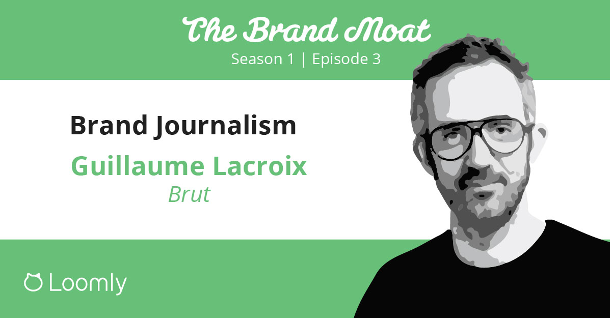
If you would like to discover stories from inspirational brand leaders and get actionable tips on how to build a successful brand and future-proof your business, check out The Brand Moat by Loomly.
13. Run a webinar
Similar to podcasts, running a webinar is another way to build brand awareness. Depending on your product or service, you may find it’s better to run webinars than host a podcast. For instance, if you want to provide more visual educational material such as screenshots, images, or live web pages. As an example, here is the latest webinar we produced at Loomly to help our users & customers streamline their collaboration workflow and boost their team productivity.
14. Make guest appearances
Even if you’re not hosting a podcast or running a webinar, you can still make guest appearances on these types of shows to promote your brand.
Liam Martin, Co-Founder and CMO of Time Doctor, appeared on 59 podcasts in 90 days so he could promote their Running Remote conference in Bali in 2019:
15. Go offline
For the final strategy in this section, we’re going offline. So far, most techniques have used online methods, but one of the most under-used tactics to build brand awareness is to go offline. Here are four options:
a) Host a conference
Hosting a conference or event can take an enormous amount of work, but it can put your brand front and center. For example, thousands of marketers and influencers attend the mega-conference Social Media Marketing World, which is run by Social Media Examiner.
b) Try business networking
If you’re a small or solo business, then why not join a networking organization or a business club, such as your local Chamber of Commerce or an online community like FrenchFounders, where you get to meet other entrepreneurs and share your expertise.
c) Organize meetup meetings
Meetup is a service used to organize online groups that host in-person events for people with similar interests. Rather than attending a meetup, you could host one yourself, so your brand gets exposure to a new audience.
d) Sponsor events
Sponsoring an event is a guaranteed way to get your brand in front of hundreds or thousands of people. For example, you could be one of the sponsors for the Running Remote conference.
How to Increase Brand Awareness
In this section, you’ll learn how to use paid promotion tactics to increase brand awareness.
16. Spread the word with social advertising
Social advertising is available on all the major platforms and offers a cost-effective way to increase brand awareness with the right type of campaign.
Facebook and Instagram brand awareness ads help you reach people who are most likely to remember your ad, and help improve brand recall. Here’s a carousel ad on Instagram from Bill Rice for his agency, Kaleidico, with some website conversion tips:
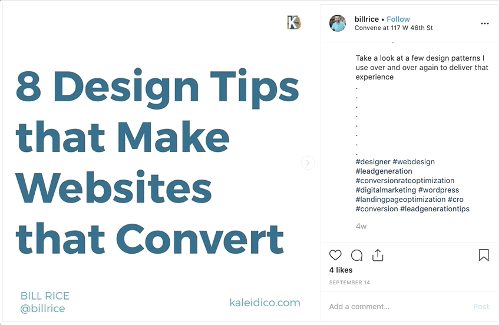
On Twitter, you can run reach campaigns to “broadcast the biggest message you have to the largest audience possible,” like this Wholly Guacamole ad:
Yes, you can freeze our guac! Simply thaw in the fridge for 12-24 hours before dipping in! Get more tips and trick at https://t.co/5z0R8ZBCmS pic.twitter.com/LNIjg86fPX
— Wholly Guacamole (@eatwholly) April 21, 2020
LinkedIn recommends using Single Image Ads, Dynamic Ads, or Text Ads for brand awareness campaigns, like this LastPass single image ad:
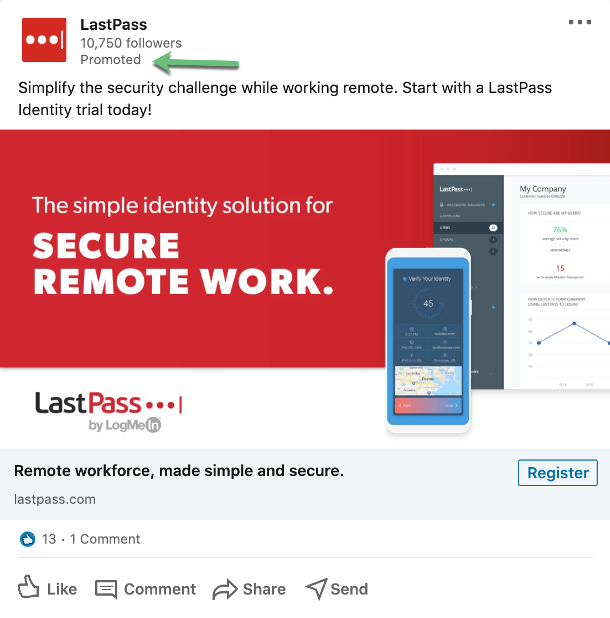
17. Reach the top of Google with PPC advertising
PPC advertising is a smart way to get your brand seen at the top of the Google search results before the organic results. You can target your brand name and other keywords:
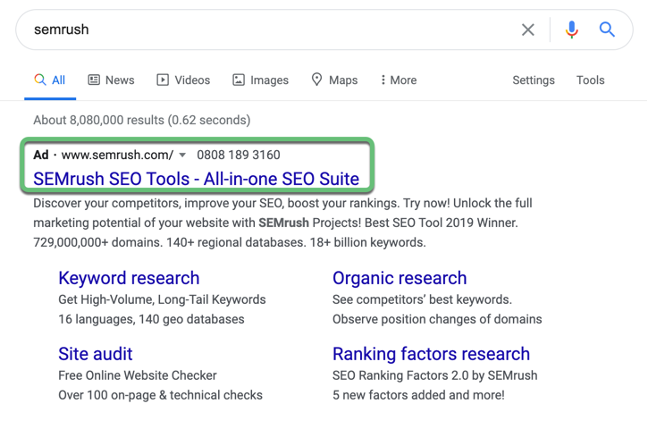
18. Track visitors with remarketing ads
Remarketing ads offer a smart way to reinforce your brand. These can be placed all across the web to display to visitors who left your site before converting. I’m sure you’ve been tracked by a persistent retargeting ad as you’ve made your way around the web.
19. Try native advertising
You can use a content discovery platform, like Taboola, to increase brand awareness through native advertising. Taboola distributes your branded content to relevant sites, so your native ads reach people where they’re already consuming similar content.
20. Maximize influencer marketing
Influencer marketing uses social media influencers to promote a brand message and increase sales of products.
According to data from MuseFind, 92% of consumers trust an influencer more than an advertisement or traditional celebrity endorsement.
You can find influencers in your industry and reach out to them about partnerships to endorse your product or co-create content to increase brand awareness.
For example, here’s a sponsored post by influencer @fosterlaneliving promoting @pinkblushmaternity maternity shorts:
And here’s another post with influencer @pencilandpaperco promoting some red @sarahflint_nyc flats.
Influencer Marketing Hub shares how Motorola worked with 13 influencers to launch a new range of smartphones called the Moto Z family and Moto Mods.
The 13 videos were all different, including one that launched the new phone attached to a 10’ rocket:
Brand Awareness in a Nutshell
Brand awareness is a top priority for marketers: a robust, trusted brand is crucial to allow your business to thrive.
Brand awareness keeps your brand top-of-mind, establishes trust, creates an association, builds brand value, and strengthens your brand moat.
